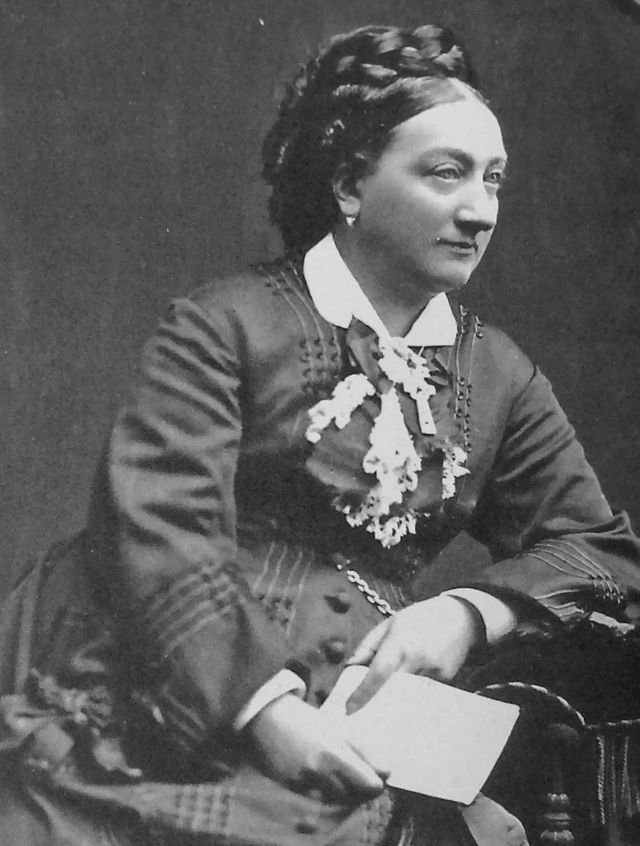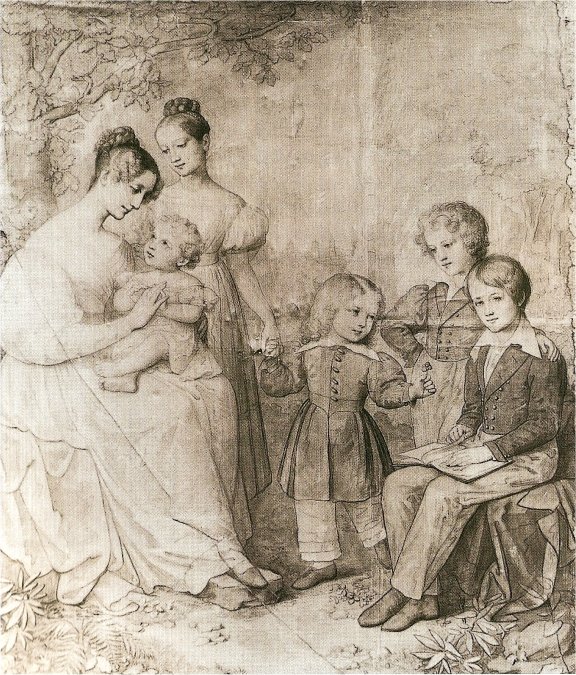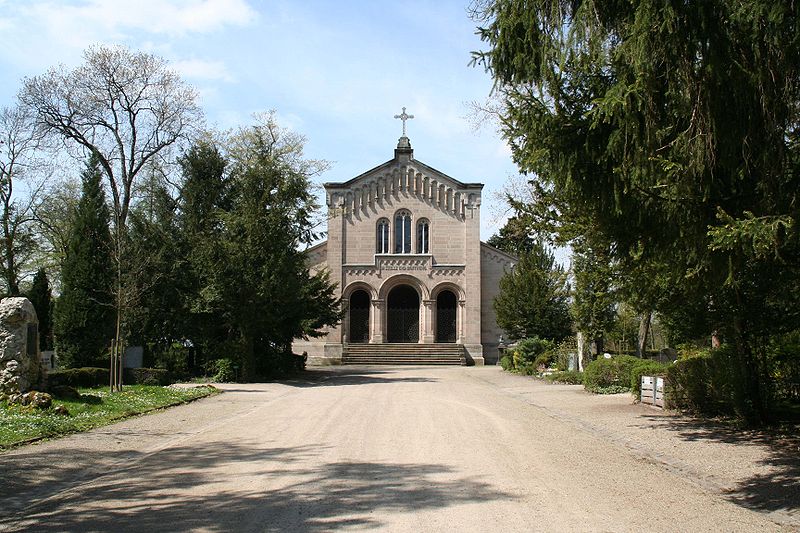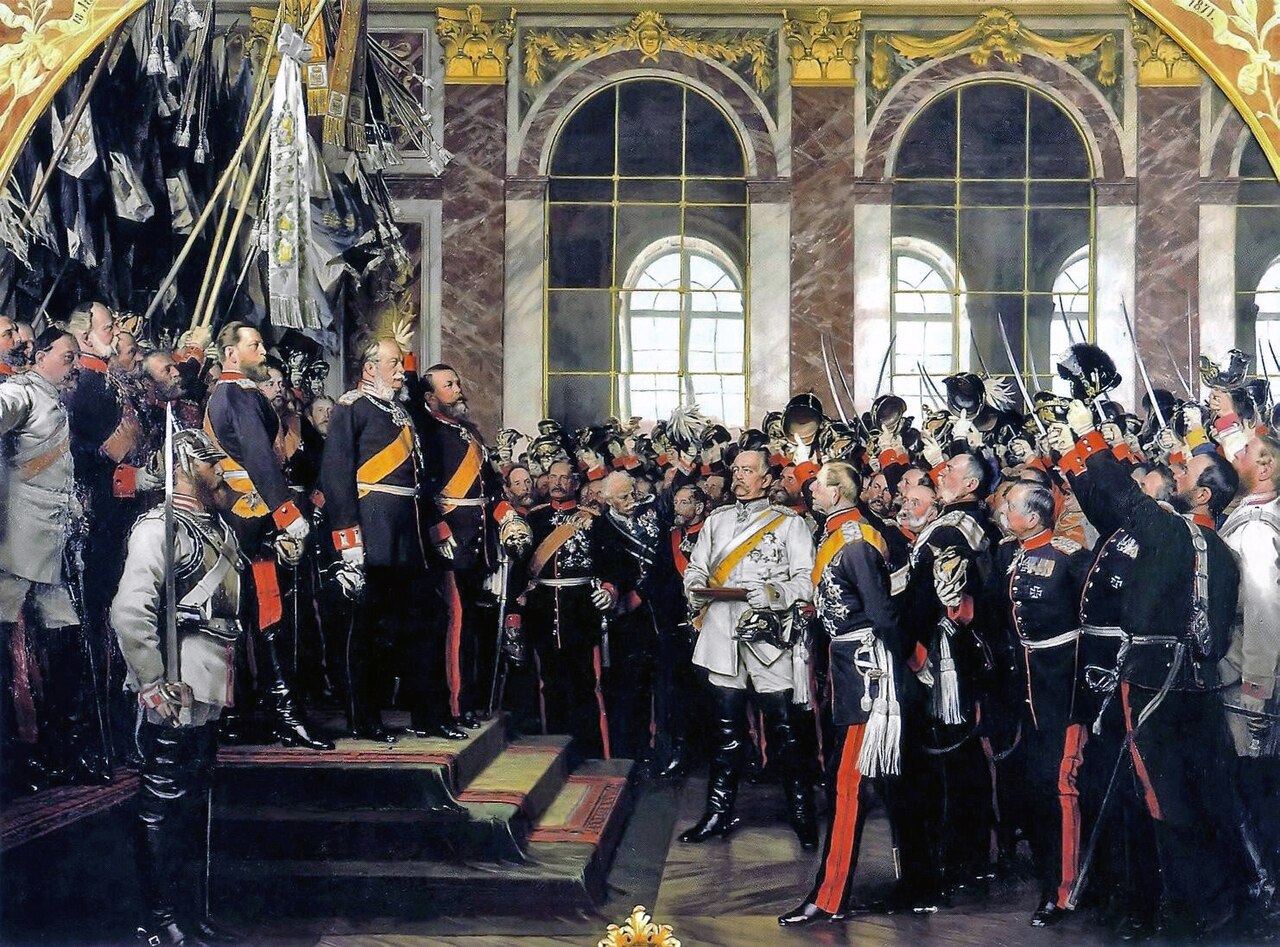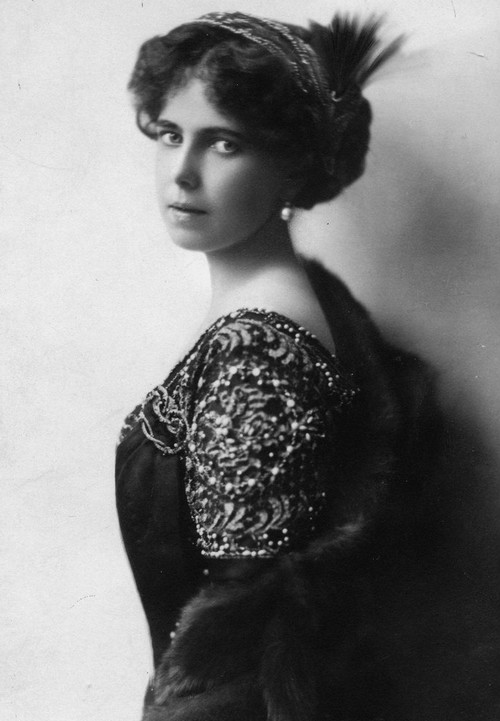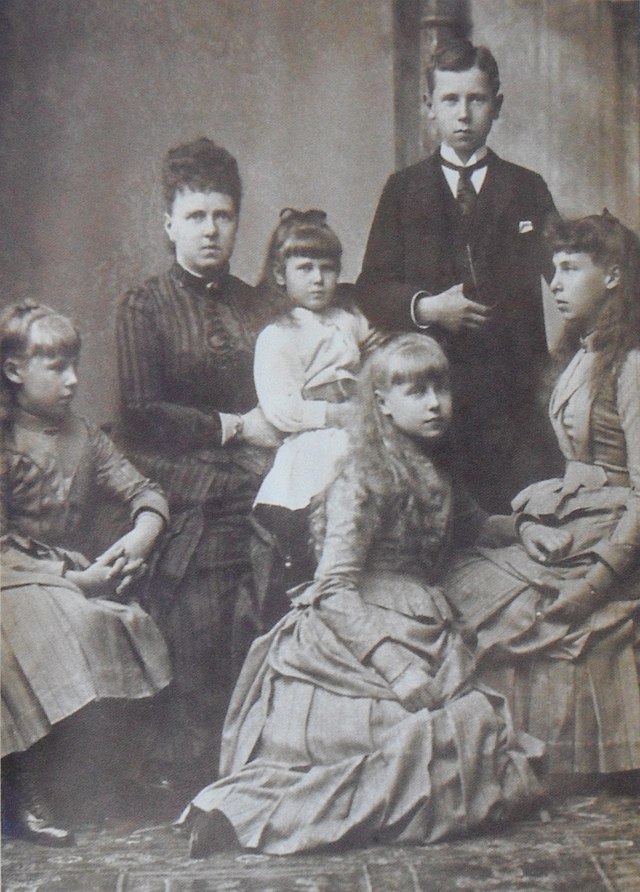by Susan Flantzer © Unofficial Royalty 2015

Credit – Wikipedia
Leopold I, King of the Belgians was born a Prince of the Duchy of Saxe-Coburg-Saalfeld on December 16, 1790, at Ehrenburg Palace in Coburg, Duchy of Saxe-Coburg-Saalfeld, now in Bavaria, Germany. He was the youngest surviving son of Franz Friedrich Anton, Duke of Saxe-Coburg-Saalfeld and Augusta Reuss of Ebersdorf. Among his siblings was the mother of Queen Victoria and the father of Prince Albert, Queen Victoria’s husband. In 1826, during the reign of his brother Ernst I, Saxe-Coburg acquired the city of Gotha from the neighboring Duchy of Saxe-Gotha-Altenburg and gave up Saalfeld to Saxe-Meiningen, thereby becoming the Duchy of Saxe-Coburg-Gotha.
Leopold had eight siblings:
- Sophie (1778 – 1835), married Emmanuel, Count von Mensdorff-Pouilly, had six sons
- Antoinette (1779 – 1824), married Alexander of Württemberg, had four sons and one daughter
- Juliane (Grand Duchess Anna Feodorovna after marriage) (1781 – 1860), married Grand Duke Konstantine Pavlovich of Russia, no issue, marriage annulled; had two illegitimate children
- Ernst I, Duke of Saxe-Coburg-Gotha (1784 – 1844), married (1) Princess Louise of Saxe-Gotha-Altenburg, had two sons, Ernst II, Duke of Saxe-Coburg and Gotha and Prince Albert, the husband of Queen Victoria; married (2) Duchess Marie of Württemberg, daughter of his sister Antoinette, no issue; had three illegitimate children
- Ferdinand (1785 – 1851), married to Princess Maria Antonia Koháry, had three sons and one daughter including King Ferdinand II of Portugal; was the grandfather of Tsar Ferdinand I of Bulgaria
- Victoria (1786 – 1861), married (1) Emich Carl, 2nd Prince of Leiningen, had two children (2) Prince Edward, Duke of Kent, had one child Queen Victoria of the United Kingdom
- Marianne Charlotte (1788 – 1794), died in childhood
- Franz Maximilian Ludwig (1792 – 1793), died in infancy
Due to the marriage of his sister Juliane to Grand Duke Konstantine Pavlovich of Russia, Leopold, at the age of five, received the honorary rank of Colonel of the Izmaylovsky Regiment, part of the Imperial Guard of the Imperial Russian Army. When the Duchy of Saxe-Coburg-Saalfeld was conquered in 1806 by Napoleon’s troops, Leopold went to Paris and became part of Napoleon’s court. He was offered the position of Adjutant by Emperor Napoleon, but he refused. In 1812, Leopold joined the Russian Imperial Army and was assigned to the staff of his brother-in-law Grand Duke Konstantine Pavlovich. At the time, Russia was at war with France and Leopold fought against Napoleon’s army and distinguished himself at the Battle of Kulm leading the cuirassier division. In 1815, by the time of the final defeat of Napoleon at the Battle of Waterloo, Leopold was 25 and had reached the rank of Lieutenant General in the Imperial Russian Army.
In 1814, at a party at the Pulteney Hotel in London, England, Leopold met Princess Charlotte of Wales, the only child of George, Prince of Wales (the future King George IV). Charlotte was second in the line of succession to the British throne and assuredly would succeed her father on the throne. Charlotte invited Leopold to call on her, and he did, remaining for 45 minutes, and then writing a letter to Charlotte’s father apologizing for any indiscretion. This letter impressed George very much, although he did not consider the impoverished Leopold as a possible husband for his daughter.
Charlotte’s father and his advisers had selected Willem, Hereditary Prince of Orange, son and heir-apparent of Prince Willem VI of Orange, as her future husband. Charlotte was not impressed with William at all and now had in her mind that Leopold would be her husband. Her father refused to give up hope that Charlotte would agree to marry the Dutch Prince. However, Charlotte wrote, “No arguments, no threats, shall ever bend me to marry this detested Dutchman.” In January of 1816, Charlotte made a desperate plea to her father to allow her to marry Leopold. Leopold came to England in February of 1816 to be interviewed by the Prince of Wales, who was impressed with Leopold and agreed to the marriage. On March 14, 1816, an announcement was made in the House of Commons that Charlotte and Leopold were to marry. Parliament voted Leopold £50,000 per year, purchased Claremont House for the couple, and allowed them a generous single payment to set up house.
Charlotte and Leopold were married on May 2, 1816, in the Crimson Drawing Room at Carlton House, the Prince of Wales’ London home. Oatlands in Surrey, the country home of Charlotte’s uncle Prince Frederick, Duke of York, was the site of the honeymoon. After the honeymoon, the newlywed couple settled at Claremont House near Esher, England which the British nation had purchased by an Act of Parliament as a wedding gift for Charlotte and Leopold. Leopold was made a British citizen, received the honorary rank of Field Marshal, and was created a Knight of the Order of the Garter The marriage was deemed to be a success and the couple was blissfully happy.

Engraving of the wedding of Charlotte and Leopold in 1816; Credit – Wikipedia
Charlotte suffered two miscarriages in the early months of her first two pregnancies, but the third pregnancy in 1817 gave Charlotte and Leopold hope. Charlotte was second in the line of succession, and she would have succeeded her father, the future George IV, as the queen but on November 6, 1817, a great tragedy struck the British Royal Family. After a labor of over 50 hours, Charlotte delivered a stillborn son. Several hours later, twenty-one-year-old Princess Charlotte, the only child of George, Prince of Wales and King George III’s only legitimate grandchild, died of postpartum hemorrhage. The British people mourned Charlotte in a manner similar to the mourning of Diana, Princess of Wales. She was buried in the Royal Tomb House at St. George’s Chapel at Windsor Castle with her stillborn son at her feet. Charlotte’s pregnancy and delivery had been grossly mismanaged, and the doctor in charge later died by suicide.
After Charlotte’s death, Leopold continued to live at Claremont House and was granted the British style of Royal Highness. In 1828-1829, Leopold had an affair with actress Karoline Bauer, a cousin of his adviser Baron Christian Friedrich von Stockmar. Karoline came to England with her mother and took up residence at Longwood House, a few miles from Claremont House. In 1830, after the Greeks rebelled against the Ottoman Empire, Leopold was offered the Greek throne. He refused because he considered the country to be too unstable, and Otto of Bavaria became King of Greece.
In August of 1830, the southern provinces (modern-day Belgium) of the Netherlands rebelled against Dutch rule. International powers meeting in London agreed to support the independence of Belgium, despite the fact that the Dutch refused to recognize the new country. On April 22, 1831, Leopold was asked by the Belgian National Congress if he wanted to be King of the Belgians. Leopold swore allegiance to the new Belgian constitution on July 21, 1831, and became the first King of the Belgians. Each year July 21 is celebrated as Belgian National Day.

Leopold taking the constitutional oath by Gustaf Wappers; Credit – Wikipedia
Less than two weeks after Leopold became King of the Belgians, the Netherlands invaded Belgium. The small Belgian army was overwhelmed by the Dutch attack. Leopold appealed to the French for support and after the arrival of the French Armée du Nord in Belgium, the Dutch were forced to accept a diplomatic intervention and retreat back to the pre-war border. Skirmishes continued for eight years, and finally, in 1839, Belgium and the Netherlands signed the Treaty of London establishing Belgium’s independence.
Leopold had to marry to provide for the Belgian succession. On August 9, 1832, Leopold married Princess Louise-Marie of Orléans, daughter of Louis-Philippe I, King of the French and Maria Amalia of the Two Sicilies, at the Château de Compiègne, in France. Since Leopold was Protestant and Louise-Marie was Catholic, they had both a Catholic and a Protestant ceremony. Although Leopold remained Protestant, his children were raised as Catholics because the vast majority of Belgians were Catholic. Louise-Marie died on October 11, 1850, at the age of 38 from tuberculosis. She had expressed a desire to be buried in Laeken in Brussels, Belgium. Leopold had the Church of Our Lady of Laeken in Brussels, Belgium built in her memory. Louise-Marie was buried there and the crypt there has become the burial site for the Belgian royal family.

Wedding of Leopold and Marie Louise of Orleans in the chapel of the Château de Compiègne; Credit – Wikipedia
Leopold and Louise-Marie had four children:
- Louis Philippe, Crown Prince of Belgium (1833 – 1834)
- Leopold II, King of the Belgians (1835 – 1909), married Marie Henriette of Austria, had three daughters and one son (who died at age 10)
- Prince Philippe, Count of Flanders (1837 – 1905), married Marie of Hohenzollern-Sigmaringen, had five children including Albert I, King of the Belgians who succeeded King Leopold II
- Princess Charlotte of Belgium, (1840 – 1927), married Archduke Maximilian of Austria, later Emperor of Mexico until his execution, no issue

Drawing of King Leopold I and his family; Credit – Wikipedia
In 1840, Leopold helped arrange the marriage of his niece, Queen Victoria, the daughter of his sister, to his nephew, Prince Albert of Saxe-Coburg and Gotha, son of his brother. Even before she succeeded to the throne, Leopold had been advising Victoria by letter, and after her accession continued to influence her.

Leopold (right), with Queen Victoria and the British royal family, in an early photograph of 1859; Credit – Wikipedia
In foreign policy, Leopold’s principal objective was to maintain Belgium’s neutrality. Because of his family connections and position at the head of a neutral and non-threatening power, Leopold acted as an important intermediary in European politics during his reign. Leopold played a particularly important role in moderating relations between the Great Powers and in particular between Great Britain and the French Empire under Napoleon III.
Leopold had a twenty-year relationship with Arcadie Claret (1826-1897). Arcadie was from Brussels and was the daughter of Major Charles-Joseph Claret (1789-1867), a veteran of Napoleon’s army and the treasurer of the Ministry of War’s Fund for Widows and Orphans of the Belgian Army. Leopold met Arcadie sometime between 1842-1844. She was only in her late teens, and almost immediately became his mistress. Leopold installed her in a luxurious house in Saint-Josse-ten-Node near Brussels. Because the affair did not go unnoticed and was discussed in detail in the press, Leopold arranged a marriage in 1845 between Arcadie Claret and his servant and friend, Ferdinand Meyer, originally from Coburg.

Arcadie Claret; Credit – Wikipedia
Leopold and Arcadie had two sons: George (1849-1904), who was born a few days before the death of Queen Marie-Louise, and Arthur (1852-1940). The boys were recognized as the sons of Ferdinand Meyer. After Queen Marie-Louise’s death, with financial and political support from Leopold, Arcadie bought Castle Stuyvenberg in Laeken, and she lived there with her children until the death of Leopold in 1865. Her second son was born there, and her mother, sisters, and brothers were also able to live there. In 1862, at Leopold’s request, his sons were created Freiherr von Eppinghoven (Baron of Eppinghoven) by his nephew, Ernst II, Duke of Saxe-Coburg and Gotha. In 1863, Arcadie was created Freifrau von Eppinghoven (Baroness of Eppinghoven).
Once George and Arthur were living at Castle Stuyvenberg, they had a princely upbringing and were privately taught by tutors. Leopold spent much of his afternoons, and sometimes whole days with Arcadie and the children. She often accompanied him on his frequent trips or stayed with him in spas, such as Wiesbaden. In Leopold’s old age, Arcadie was his nurse and she was with him during his last illness. Prior to his death, Leopold had secured the futures of both Arcadie and their sons. After Leopold’s death, Castle Stuyvenberg was secretly sold to his son and successor, King Leopold II. In 1900, the castle became part of the Royal Trust.
After Leopold’s death, George was placed under the protection of his cousin, Ernst II, Duke of Saxe-Coburg-Gotha. Later he became an officer in the Prussian army. Arthur became the Grand Marshal of the Ducal Court of Coburg. As a representative of Coburg in 1909, he was present at the funeral of his half-brother King Leopold II. However, he did not remain unnoticed. Because of his height and his lush, square-cut beard, he closely resembled his deceased half-brother.
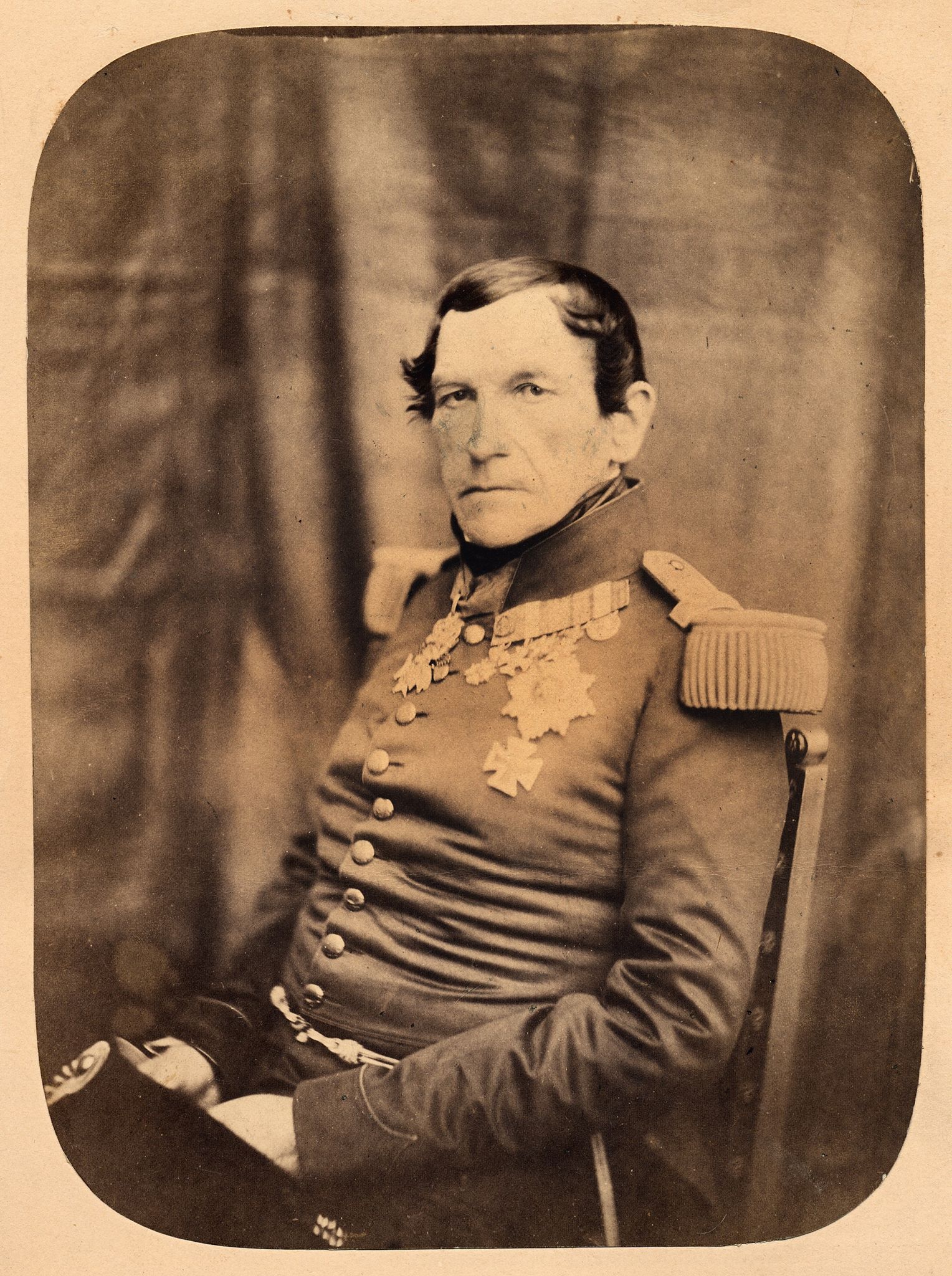
King Leopold I of the Belgians; Photo Credit – Wikipedia
King Leopold I of the Belgians died on December 10, 1865, at the age of 74 at the Royal Palace in Laeken, Belgium. Among his last words were “Charlotte…Charlotte.” Was he calling to his daughter or to his beloved first wife Princess Charlotte of Wales? King Leopold was buried in the Royal Crypt in the Church of Our Lady in Laeken, in Brussels, Belgium with his wife Queen Marie-Louise.

Funeral of Leopold in Brussels; Credit – Wikipedia

Tomb of Leopold and Louise-Marie; Photo Credit – Wikipedia
This article is the intellectual property of Unofficial Royalty and is NOT TO BE COPIED, EDITED, OR POSTED IN ANY FORM ON ANOTHER WEBSITE under any circumstances. It is permissible to use a link that directs to Unofficial Royalty.
Kingdom of Belgium Resources at Unofficial Royalty



















